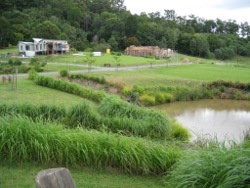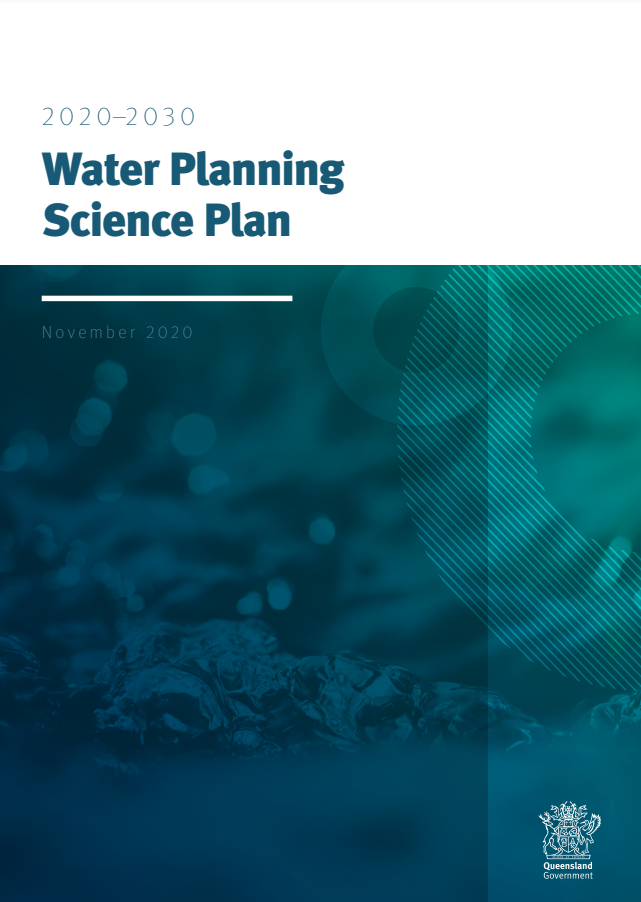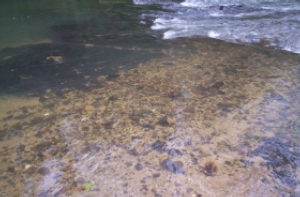|
|
Water managementManagement of wetlands, including the management of water quality and quantity, should be considered on a whole-of-landscape or catchment basis. A number of Queensland programs and initiatives address planning and managing water quantity and water quality that affect wetlands. Each wetland system and type, and the plants and animals that depend on them, have evolved to suit the natural range of water quantity and quality. Beyond these natural variations, wetlands can change in condition or nature, and this affects their values. Water management can have a major influence on wetland processes and in turn, wetland condition or health. Issues to consider for water management and wetlands include:
If the water quantity and quality of wetlands change, e.g. by diverting or damming the water or by polluted stormwater run-off, it could change their processes, condition and values. Water quantity managementWater is a fundamental and vital resource for the prosperity and wellbeing of all Queenslanders. It is also essential to the health of wetlands. Water is not in endless supply and surface water and groundwater reserves need to be maintained to provide for present and future generations. The Water Act 2000 and water resource plans, strive to balance values so that everyone can continue to enjoy the benefits that flow from properly managed water resources and the ecosystems on which they depend. The Water Act recognises the need for human water use (e.g. for towns, industry, irrigation and mines) to make adequate provision for the natural processes that underpin wetland health. The Water Act requires the preparation of water resource plans (and where necessary, resource operations plans) which ensure that water is equitably managed to preserve our quality of life and aquatic ecosystems. A water resource plan details what the government aims to achieve for a catchment’s social, economic and environmental needs, while a resource operations plan details how water resources will be managed from day to day to meet these objectives. Water allocation requirements of wetland systemsThe water supplied to wetlands by natural events can be modified by a range of human activities. These activities include river regulation, river diversion, prolonged inundation (e.g. crop flooding), and the removal of water from surface and groundwater supplies. This can lead to the degradation or permanent change of some wetlands. The importance of water allocation requirements for wetland systems has gained recognition in recent years and methodologies have been developed to determine their requirements. Water planning science plan 2020–2030The Water planning science plan 2020–2030 explains how science is used to develop water plans and improve water planning. Explore the various ways science is used in water planning using the interactive storymap.
The following references provide more detailed information about the water requirements of different wetland systems:
The Water Monitoring Information Portal presents data on the quantity and quality of surface freshwater and groundwater systems across Queensland, and the water quality of Queensland coastal catchments. This supports natural resource management initiatives and water planning. Water quality managementWater quality in all wetland systems varies naturally due to natural factors, e.g. climatic condition, underlying geology, vegetation etc. Water quality is also impacted by human activities such as land clearing, changes in land use, management practices and discharges of treated wastewater effluents. These impacts can adversely affect the wetland ecosystems, as well as the human uses and values of the wetlands e.g. industrial, recreational and cultural.Complementary initiatives, such as the National Action Plan for Salinity and Water Quality and vegetation management planning, will also contribute to the health of our wetlands. The basic process for water quality management is:
The above water quality management process/framework is embodied in the National Water Quality Management Strategy (and associated documents) and in the Queensland Government’s water quality management activities under the Environmental Protection Act 1994 and the Environmental Protection (Water) Policy 1997. The Water Quality Australia Website links to the National Water Quality Management Strategy, issues affecting water quality and links to the Australian and New Zealand Guidelines for Fresh and Marine Water Quality. Default guideline values can provide a generic starting point for assessing water quality, including the assessment of sediment quality. The Water Quality Australia Website has developed default guideline values for a limited number of sediment toxicities. The following references provide more detailed information about water quality management of wetland systems:
Additional information
References
Last updated: 7 July 2021 This page should be cited as: Department of Environment, Science and Innovation, Queensland (2021) Water management, WetlandInfo website, accessed 18 March 2024. Available at: https://wetlandinfo.des.qld.gov.au/wetlands/management/water.html |

 — Department of Environment, Science and Innovation
— Department of Environment, Science and Innovation




